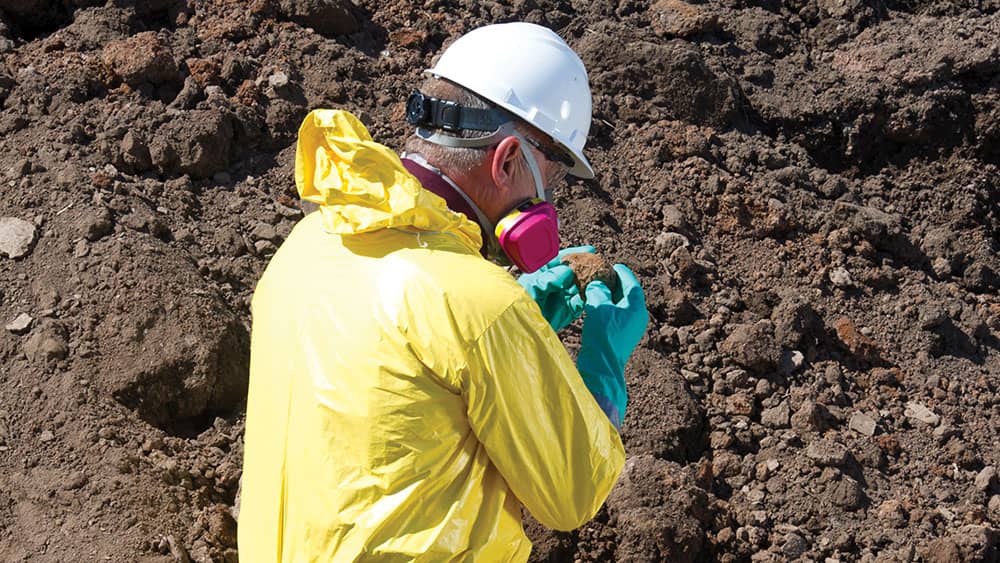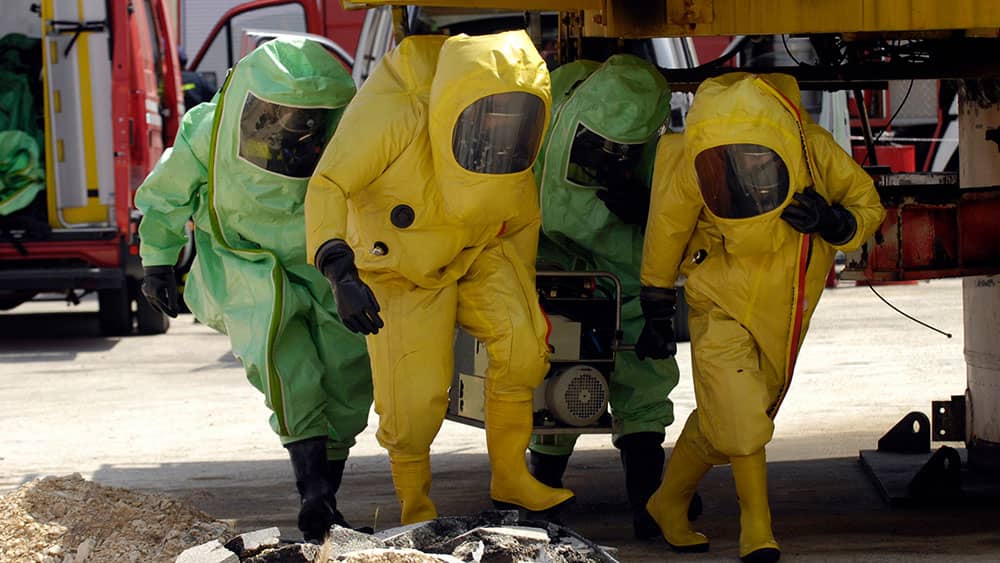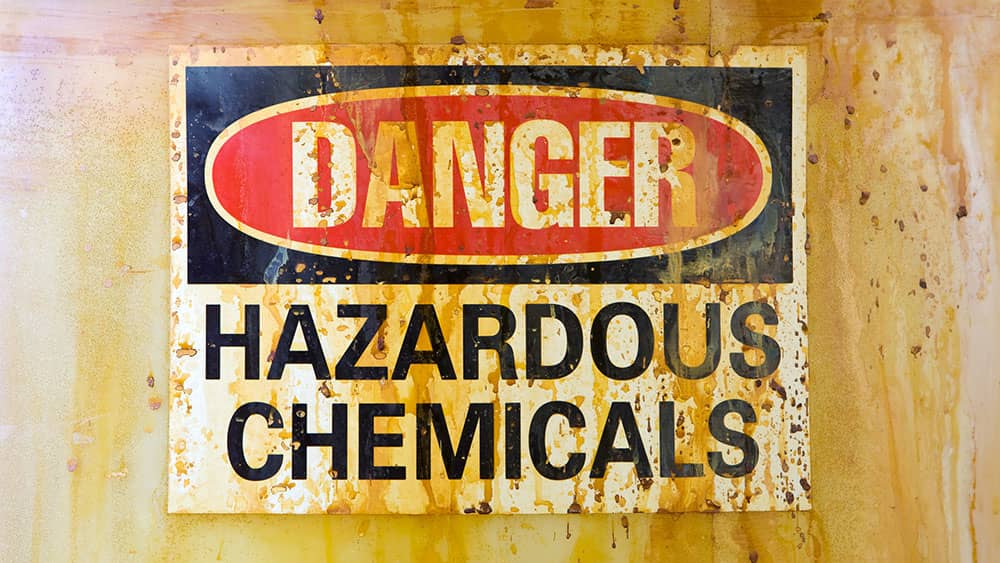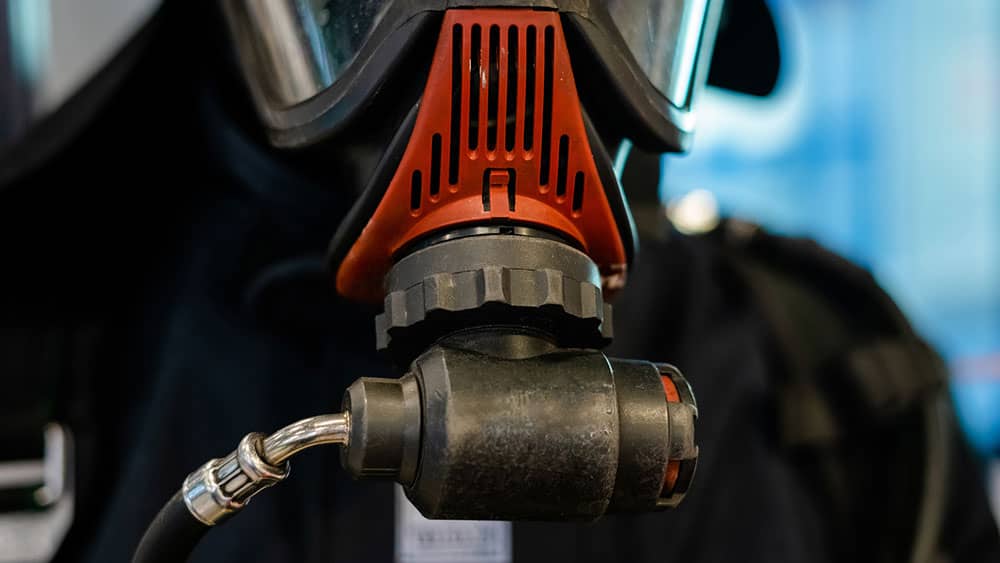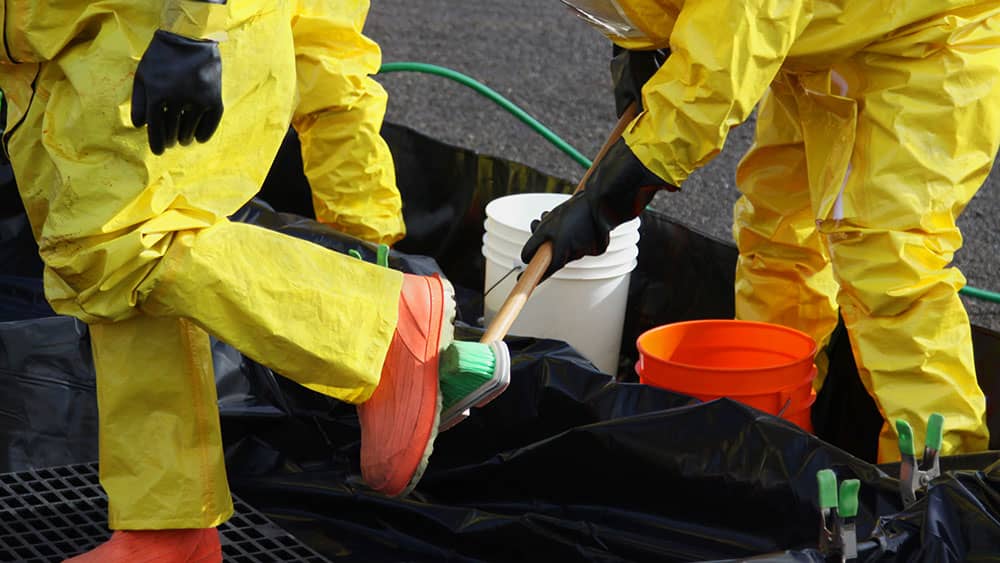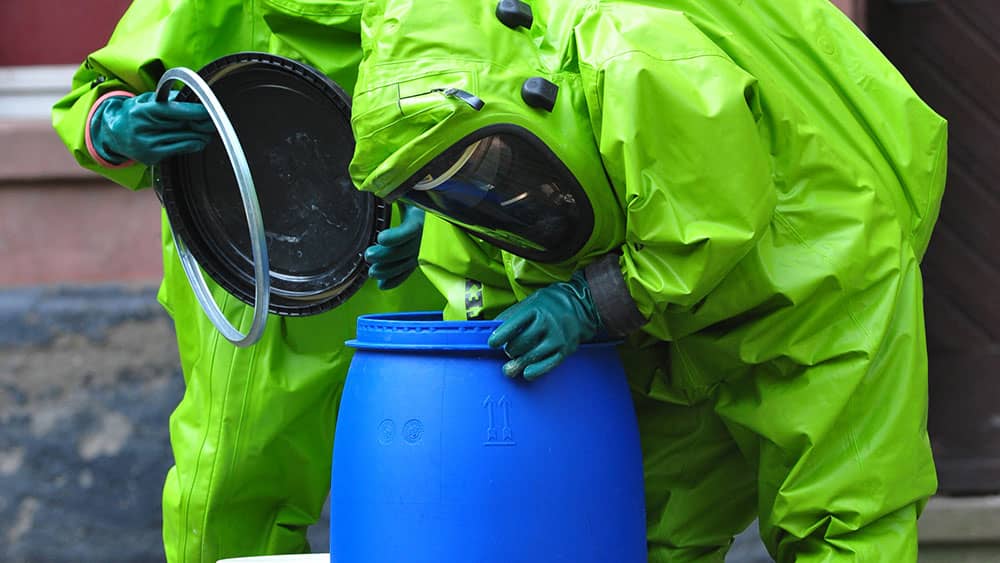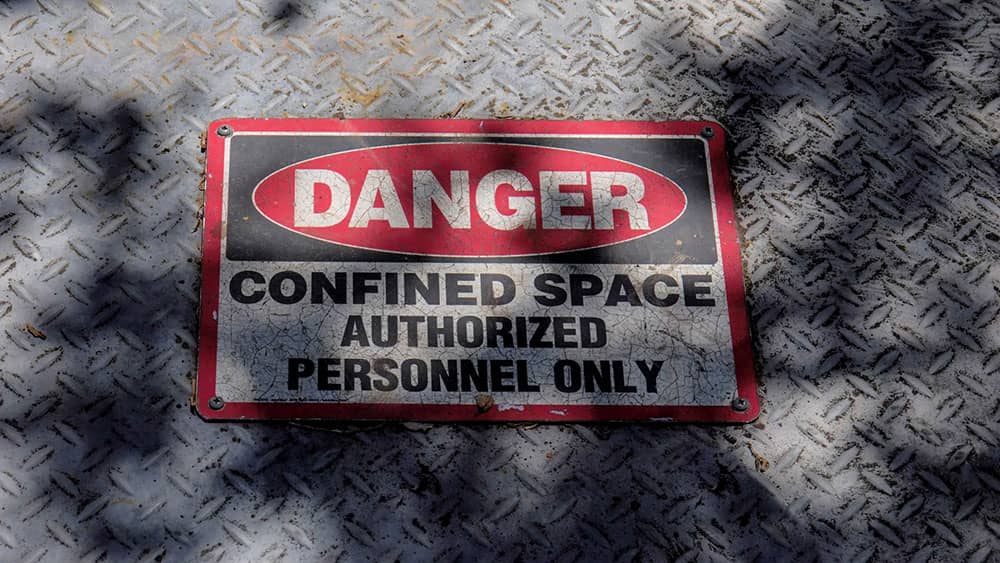HAZWOPER Training 40-Hour Initial — General Waste Site Workers
This high-impact, multi-course HAZWOPER training curriculum covers the essentials of hazardous substance removal or other exposure activities by general waste site workers.

According to OSHA, a "cleanup operation" is an operation where hazardous substances are removed, contained, incinerated, neutralized, stabilized, cleared-up, or in any other manner processed or handled with the goal of making the site safer for people or the environment. All employees working on sites with cleanup operations covered by the HAZWOPER standard must receive training if they are exposed to hazardous substances, health hazards, or safety hazards.
General waste site workers (such as equipment operators, general laborers and supervisory personnel) engaged in hazardous substance removal or other activities that expose or potentially expose workers to hazardous substances and health hazards must receive a minimum of 40 hours of initial instruction off the site, and a minimum of three days actual field experience under the direct supervision of a trained, experienced supervisor.
To prepare for site work, general waste site workers must be thoroughly trained in the following:
- Names of personnel and alternates responsible for site safety and health;
- Safety, health, and other hazards present on the site;
- Personal protective equipment (PPE) use;
- Work practices by which the worker can minimize risks from hazards;
- Safe use of engineering controls and equipment on the site;
- Medical surveillance requirements, including recognition of symptoms and signs that might indicate overexposure to hazards;
- Decontamination procedures;
- The site's emergency response plan for safe and effective responses to emergencies, including the necessary PPE and other equipment;
- Confined space entry procedures; and
- The site's spill containment program
HAZWOPER: 40-Hour Initial Training: General Waste Site Workers Curriculum
Twenty online, e-learning courses are included within the HAZWOPER: 40-Hour Initial Training: General Waste Site Workers Curriculum.
HAZWOPER: Overview for Waste Site Workers
This HAZWOPER training teaches about hazardous waste cleanup site hazards, the HAZWOPER Standard, and how it all impacts cleanup workers.
HAZWOPER: Health and Physical Hazards
This HAZWOPER training creates awareness to hazards that may be present when working at a hazardous waste cleanup site or responding to an emergency release.
HAZWOPER: Chemical Fundamentals
This training informs learners of how chemical-related terms are defined; the health and physical hazards, properties, stability, reactivity, and toxicity of chemicals; and the routes, symptoms, types, and effects of chemical exposure.
HAZWOPER: Written HAZWOPER Plans and Programs
This HAZWOPER training course is designed to focus on the plans and programs that are required prior to conducting any work at a hazardous waste cleanup site.
HAZWOPER: Medical Program
This Hazwoper training course will teach learners about the medical program, including types of exams, treatments and symptoms to watch for during emergency response operations.
HAZWOPER: Exposure Monitoring and Sampling
This Hazwoper training course is designed to teach learners the difference between exposure monitoring & sampling, the instruments to use, requirements & more.
HAZWOPER: Site Control Measures
This HAZWOPER training teaches learners how to maintain hazardous waste cleanup site control.
HAZWOPER: Personal Protective Equipment and Clothing
This HAZWOPER training course informs learners of the different types of PPE and CPC, including their uses and limitations, levels of protection, how to don and doff the equipment, and the importance of proper storage, inspection, and maintenance.
HAZWOPER: Respiratory Protection
This Hazwoper training course informs learners about the purpose of respirators, the equipment to use, and how to use and clean them properly.
HAZWOPER: Decontamination
This training focuses on ways to avoid contamination, the decontamination process including methods and equipment used in decontamination, the limitations associated with decontamination, the decontamination line itself, and emergency decontamination procedures.
HAZWOPER: HazCom, Hazmat, and Hazardous Waste
This training course covers the HazCom, Hazmat, and Hazardous Waste regulations from a Hazardous Waste Operations and Emergency Response perspective.
HAZWOPER: Handling and Shipping Drums and Containers
This HAZWOPER training course focuses on the precautions and procedures to use when handling, opening, staging, and shipping drums and other containers of hazardous substances.
HAZWOPER: Hazardous Substance Recognition and Identification
This HAZWOPER training helps educate employees about recognizing and identifying hazardous substances, as well as what to do during a hazardous substance emergency.
HAZWOPER: Emergency Response Planning
This training course focuses on what an Emergency Response Plan (ERP) is, the basic steps involved in an emergency response, employee roles in a response to a hazardous substance emergency release, and internal and external communications during an emergency.
HAZWOPER: Emergency and Post-Emergency Response Procedures
This training course exposes learners to the steps used for notification, preparation, and response during emergency and post-emergency response operations.
HAZWOPER: Fire Prevention and Protection
This HAZWOPER training course is designed to address the fire basics at any hazardous waste cleanup site.
HAZWOPER: Radiation and Biological Exposures
This HAZWOPER training course is designed to familiarize workers with the types of radiation they may encounter at work, dose limits, postings, and how to minimize exposure to radiation.
HAZWOPER: Confined Spaces
This training provides the necessary information to help prevent injuries, illnesses, and fatalities that may result from working in or around permit-required confined spaces at hazardous waste cleanup sites.
HAZWOPER: Electrical Safety and Lockout/Tagout
The HAZWOPER training course familiarizes workers with the basics of electrical safety, how to recognize and avoid electrical hazards, what hazardous energy is, and how to properly perform lockout/tagout procedures to help avoid incidents involving electricity and other hazardous energy.
HAZWOPER: Temperature Extremes
This HAZWOPER training course is designed to inform cleanup site workers about the dangers of working in extreme temperatures, the signs and symptoms to watch for in temperature-related injury or illness, how to respond to signs and symptoms, and how to protect themselves when working in temperature extremes.
Intended Audience: Any employees who may be involved or expected to engage in hazardous waste cleanup operations where the employee may be exposed to hazardous substances, health hazards or safety hazards. These cleanup workers include:
- General site workers, such as equipment operators, general laborers and supervisory personnel
- Workers on the site only occasionally for a specific limited task (ie: groundwater monitoring, land surveying or geo-physical surveying) and who are unlikely to be exposed over permissible exposure limits
- Workers regularly on the site who work in areas which have been monitored and fully characterized indicating that exposures are under permissible exposure limits where respirators are not necessary, and the site characterization indicates that there are no health hazards or the possibility of an emergency developing
Copyright Date:
- 2018
IMPORTANT NOTE: In OSHA's view, HAZWOPER online training, by itself, is not sufficient to meet the intent of the agency's training requirements for HAZWOPER, 29 CFR 1910.120 for general industry or 29 CFR 1926.65 for construction. Therefore, online training must be supplemented by site-specific elements, hands-on training and exercises, and an opportunity for trainees to ask questions of a qualified trainer. When using this course curriculum as a tool to help with training under §1910.120(e)/§1926.65(e), we suggest you:
- Ensure your trainer is qualified, in accordance with §1910.120(e)(5)/§1926.65(e)(5);
- Augment the online training with site-specific elements;
- Tailor your training to the employees' assigned duties;
- Include hands-on training to familiarize trainees with equipment, PPE, and safe practices;
- Provide trainees with immediate and direct access to a qualified trainer as they are taking the course;
- Offer an opportunity for trainees to ask questions of the qualified trainer;
- Ensure all training elements listed in the regulation are covered;
- Meet the training duration requirement under §1910.120(e)/§1926.65(e) (NOTE: This online training course curriculum is not intended to fill the training duration requirement of 40 hours, and it is anticipated the remaining duration will be filled with the items in the suggested bullet items above);
- Ensure a trained, experienced supervisor provides the specified three days of actual field experience for trainees under his or her direct supervision; and
- Ensure the trainer (or head instructor), trained supervisor, and, according to OSHA sources, the employer, certifies the trainee has, in fact, met the applicable training and field experience requirements in accordance with §1910.120(e)/§1926.65(e). (NOTE: The online training course curriculum does not provide HAZWOPER certification per §1910.120(e)(6)/§1926.65(e)(6); the online course curriculum certificate only acknowledges the completion of the online training itself).
Alternatively, the employer may certify the trainee has equivalent training in §1910.120(e)(9)/§1926.65(e)(9), after meeting the specifications of §1910.120(e)(9)/§1926.65(e)(9).
-
Start your HAZWOPER training today!
- START TRAINING FOR FREE

These training programs are also available to download for use on your own Learning Management System (LMS) or company intranet!
Why J. J. Keller® Training?
ROBUST ONLINE TRAINING LIBRARY
Access the industry’s largest online training library, consisting of 950+ unique E-Learning courses, 500+ customizable training resources, and more.
STREAMING VIDEO FOR ADDED IMPACT
Make the most of your classroom training sessions with 300+ hi-res training videos developed by adult learning specialists.
EASY ACCESS ANYTIME, ANYWHERE
Enjoy maximum flexibility with 24/7 access to hundreds of titles through our mobile-friendly site, plus a free app for learners to train on the go.
EXPERT CONTENT YOU CAN TRUST
Backed by 70 years of industry experience, our courses center on actionable learning objectives and receive regular updates from our in-house experts to reflect the latest regulatory changes.
FREE RECORDKEEPING AND REPORTING
Easily track which employees have been trained on which topics and when, and identify any lapses in your training program – at no added cost.
INVALUABLE MANAGEMENT RESOURCES
As an administrator, you’ll gain exclusive access to the J. J. Keller® Reference Hub, where you can reference word-for-word regulations, ask our experts specific compliance questions, and more.
